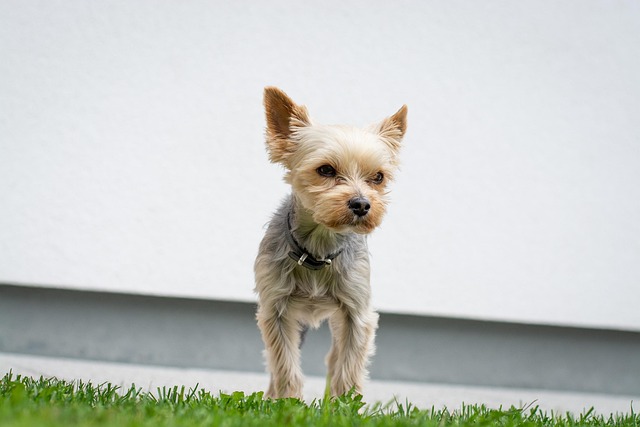
How to train a service dog for social anxiety?
A service dog trained for social anxiety isn’t just a pet—it’s a trusted ally that can ease stress in everyday moments others take for granted.
Dealing with a stubborn dog during house training can feel like a never - ending battle, but it’s far from impossible with the right approach. Many pup parents get frustrated when their furry friend keeps missing the designated spot, whether it’s a pee pad in the apartment or a corner of the backyard. The key here is to stop seeing “stubbornness” as defiance—more often than not, it’s confusion about what you want, or even anxiety about making a mistake.
First, stick to a strict routine that aligns with your dog’s natural needs. Take them out first thing in the morning, right after meals, and before bed—this consistency helps their body learn when it’s time to go. When they do use the correct spot, reward them immediately with a tiny treat and excited praise—dogs connect positive reinforcement to actions faster than scolding. Avoid punishing accidents; if you catch them mid - act, calmly redirect to the right area. Yelling or rubbing their nose in it only makes them scared to go in front of you, which worsens the problem.
 Don’t forget to check your local pet laws, too. In many places, you’re required to clean up after your dog in public spaces—carrying poop bags isn’t just polite, it’s the law. Some cities also have rules about leashing dogs during walks, even in residential areas, which matters for house training: if your dog can’t roam freely in unsafe spots, they’re less likely to have accidents outside the designated area. Knowing these rules keeps you compliant and makes training safer for both of you.
Don’t forget to check your local pet laws, too. In many places, you’re required to clean up after your dog in public spaces—carrying poop bags isn’t just polite, it’s the law. Some cities also have rules about leashing dogs during walks, even in residential areas, which matters for house training: if your dog can’t roam freely in unsafe spots, they’re less likely to have accidents outside the designated area. Knowing these rules keeps you compliant and makes training safer for both of you.
Pay attention to your dog’s body language—this is where you’ll catch cues before an accident happens. Sniffing the floor, circling, or pacing are all signs they need to go. If you’re in an apartment, keep a pee pad in a low - traffic area and guide them there when you see those cues. For bigger dogs, a doggy door to a fenced yard can help, but only once they understand the door leads to their potty spot—you might need to train them to use the door first with treats.
Be patient—house training a stubborn dog takes time, usually 4 - 6 weeks, but sometimes longer for older pups or rescue dogs. If you’re struggling, consider a local dog trainer who uses positive reinforcement methods; many are familiar with regional training challenges, like apartment living in busy cities or large yards in suburban areas. Remember, every small win—like a week without accidents—is progress, and celebrating those moments keeps both you and your dog motivated.
House training is about building trust between you and your dog. They want to make you happy, even if it takes them a little longer to understand how. By staying consistent, using positive rewards, following local laws, and paying attention to their needs, you’ll turn that “stubborn” pup into a well - trained companion who knows exactly where to go. It won’t always be easy, but the peace of mind—no more hidden accidents, no more stress—will be worth every effort.

A service dog trained for social anxiety isn’t just a pet—it’s a trusted ally that can ease stress in everyday moments others take for granted.

Chihuahuas often bite not out of aggression, but because their small size makes them feel vulnerable—like when a kid reaches for their collar too fast or a stranger bends down suddenly.

House training an adult dog differs from teaching a puppy, but it’s absolutely doable with consistency. Many adult dogs may have picked up old habits from past homes or lack prior training, so patience becomes your best tool here.

Dealing with a stubborn dog during house training can feel like a never - ending battle, but it’s far from impossible with the right approach.

The moment your dog's teeth make contact with skin, the world shifts. Whether it was a warning nip or a serious bite, the fear and confusion are real.

Territorial aggression in dogs often shows up as growling when someone approaches the front door or snapping near their food bowl—common triggers that can escalate if not addressed.